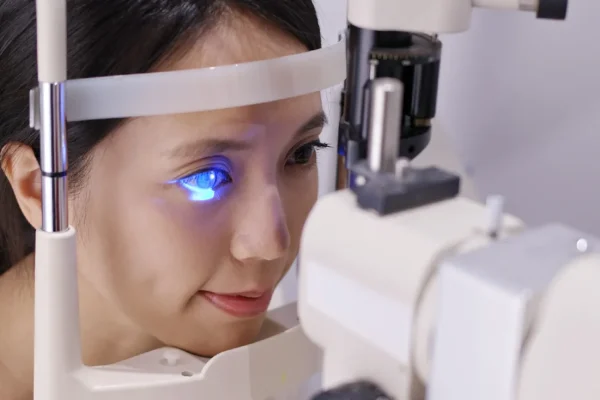
27 Agu 12 Things I Thought I Knew About Heart Disease – BUT ARE WRONG.
12 Things I Thought I Knew About Heart Disease – BUT ARE WRONG.
By Island Hospital | Aug 27, 2018 11:09:00 PM
Heart disease remain as the Number One Killer in many countries yet there are still so many false perceptions about it and it is time we unearth them, before it is TOO LATE.

In women aged above 40, heart attack kills more people than all female cancers combined. Women who still have menstrual cycles are protected by their female hormones, and hence, are more prone to develop heart disease after menopause. After which, they catch up with men on the risks. Nevertheless, younger women with risk factors, especially diabetes, tend to have similarly increased risks as with males.

The build-up of cholesterol deposits (atheromatous plaque) in the heart arteries starts as early as late teens to the early twenties. This process (atherosclerosis) is PROGRESSIVE OVER THE YEARS and is ACCELERATED by various factors such as:
- smoking,
- unhealthy diet,
- family medical history of heart disease and
- physical inactivity.
Unfortunately, the progressive narrowing of the arteries tend to be a silent process sometimes until significant blockage (above 70%) occurs.

Most people would be aware of diabetes, hypertension and smoking as risk factors. Sure, these are major factors. However, these factors can also increase the risk of heart disease:
- having a “pot belly” or a waist-to-hip ratio of more than 1,
- leading a sedentary lifestyle,
- having a diet with high content of sugar, meats, fried food and insufficient vegetables

A positive family history (i.e. an immediate family member having heart disease, especially at an early age) INCREASES ONE’S CHANCES of developing heart disease. However, a negative history does not necessarily mean that you won’t get it. During our parents’ time, people generally had MORE PHYSICAL EXERTION, enjoyed A LESS REFINED AND HEALTHIER DIET, and thus, were usually less overweight, very unlike the current generation’s sedentary lifestyle and diet of processed food.

The whole number means little. It’s the profile that matters.
Cholesterol is a waxy substance. It’s not “bad”: your body needs it to build cells. But too much can be a problem.
Cholesterol comes from two sources. Your body (specifically your liver) makes all the cholesterol you need. The rest you get from foods from animals.
Together with other substances, cholesterol can form a thick, hard deposit that can narrow the arteries and make them less flexible. If a clot forms and blocks a narrowed artery, a heart attack or stroke can result.
There are actually two types of cholesterol: “bad” and “good.” LDL cholesterol is the bad kind. HDL is the good kind. Too much of the bad kind — or not enough of the good kind — increases the chances that cholesterol will start to slowly build up in the inner walls of arteries that feed the heart and brain.
LDL cholesterol is like a vehicle which carries delivers the good but just drops it off, whereas HDL cholesterol is like a vehicle which cleans away the stuff LDL drops off, delivers the stuff and puts it away neatly. This (good!) vehicle helps keep the roads from becoming blocked.
The higher the level of LDL against HDL, the higher the risk of heart disease.
Triglycerides are the most common kind of fat in the body; when you eat, your body converts any calories it doesn’t need to use right away into triglycerides and store them in your fat cells. A high triglyceride level combined with low HDL cholesterol or high LDL cholesterol is linked with fatty buildups in artery walls. This increases the risk of heart attack and stroke.

Only foods from animal origin contain cholesterol. Hence, nuts, peanut butter, canola oil, grapeseed oil,… are all cholesterol-free, but that doesn’t mean they are healthy. They could contain high amounts of SATURATED FATS that cause CHRONIC LOW-GRADE INFLAMMATION. There has been increasing evidence that trans fats (fats that have been solidified by adding hydrogen) are even more harmful. Trans fat can be found in margarine, hydrogenated oils, bakery products, fried foods

Heart attack can actually be a SILENT KILLER. About a quarter of heart attacks produce no symptoms. At other times, a heart attack may mimic other conditions, e.g. gastritis, dizziness, backache… The discomfort may even go away after a few hours. Whichever way a heart attack shows itself, the same level of danger is present.
The message is: When in doubt, err on the side of safety and have yourself checked by a cardiologist. It is better to be safe than sorry.
A health check-up can be done routinely to ensure you are on top of things.

Just because your dentist pulls out one rotten tooth doesn’t mean you don’t have to brush and floss your teeth regularly. The same goes with your heart.
The main factors why you developed heart disease, in the leading place, are still there (i.e. uncontrolled cholesterol levels, hypertension,…)
Unless you diligently take the necessary medication and manage your lifestyle in the most optimally healthy way, the same problem may hit you again.
You’ve been given a 2nd chance; make the most of it.

Approximately 40% of heart attack victims don’t get the chance to reach the hospital, so that leaves only the survivors to benefit from advanced medical care. How do you know you won’t be in the leading 40%?

Leg pain felt in the muscles could be a sign of a condition called peripheral artery disease (PAD). PAD results from blocked arteries in the legs caused by plaque buildup. Peripheral artery disease (PAD) is a narrowing of the peripheral arteries to the legs, stomach, arms, and head — most commonly in the arteries of the legs. PAD is similar to coronary artery disease (CAD).
Both PAD and CAD are caused by atherosclerosis that narrows and blocks arteries in various critical regions of the body.
The risk for heart attack or stroke increases for people with PAD.

It’s true you should eat a diet low in saturated fat and avoid trans fat altogether. But other fats, notably the UNSATURATED FATS in vegetable oils and other foods, are BENEFICIAL. In fact, eating fish high in omega-3 fatty acids, such as salmon, twice a week can lower the risk of heart disease.
Include low-fat dairy products, fatty fishes, nuts, and olive oil in your diet. If you eat meat, manage your portion each week.

It is known that the antioxidant vitamins E, C, and beta carotene can help to lower heart disease risk. However, clinical trials of supplements of these vitamins have either failed to confirm the benefits or the trials were conducted in such a way that no conclusion could be drawn. The American Heart Association has stated that there is no scientific evidence showing that these supplements prevent or treat cardiovascular disease.
The body absorbs and utilizes vitamins and minerals best when they are acquired through foods. To ensure you get the vitamins and minerals you need, skip store-bought supplements and eat a wide variety of nutritious foods of every color of the rainbow.






